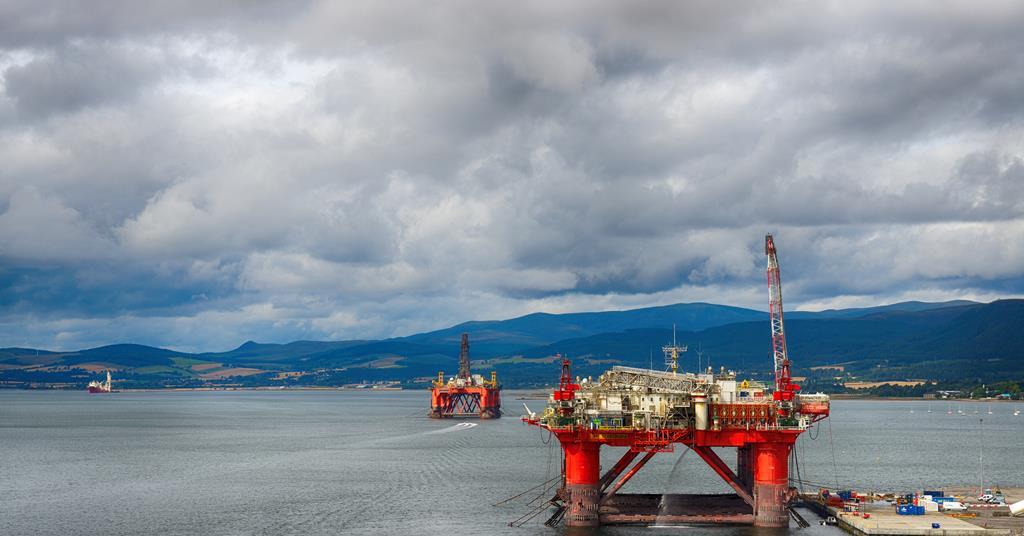
Estimates of the UK’s methane emissions from upstream oil and gas operations from offshore activities largely underestimated the data for 2019, a new study suggests.
During COP26, the UK signed a commitment to reduce global methane emissions by at least 30% by 2030 called the Global Methane Pledge. Methane enters the air through various routes, one of which is leaks from the oil and gas industry. Leaks from offshore oil and gas activity can occur during venting, flaring, processing activities, offshore oil loading and gas transfer by high-pressure pipelines. In 2019, the UK’s National Atmospheric Emissions Inventory estimated that 52Gg of methane (0.13% of offshore produced methane) was lost before it reached land.
‘It is critical to know when, where and how much methane is emitted from each of its sources in order to best prioritise emission reductions,’ says Denise Mauzerall from Princeton University in the US. Now, Mauzerall and Stuart Riddick, from Colorado State University, have evaluated how methane emissions from offshore oil and gas production in the UK are estimated. They concluded that these methane emissions are underestimated because they rely on outdated emission factors (some of which are based on unpublished research), incomplete activity data and incomplete data on vented emissions.
‘It helps to understand where and when the emission factors come from and how representative they really are. [This study] does a really good job at dissecting that,’ comments Paul Balcombe, an expert on methane emissions from Queen Mary University of London in the UK.
In their study, Mauzerall and Riddick reassess methane emissions from offshore extraction and transport of oil and gas in the UK using what they describe as top-down studies. They used emission factors derived from data in published studies and considered environmental variability, such as wind speed, as well as in situ measurements from emissions sources. According to Mauzerall and Riddick’s method, estimates for 2019 methane emissions from offshore gas and oil activity would be at 289Gg – rather more than the 52Gg reported by the UK.
‘The key improvement that this paper gives is providing emission factors that are more up-to-date instead of using ones from the 1980s or 1990s [as well as] trying to use more local data,’ says Balcombe. ‘There is still some improvement that needs to be made on regional [emission factor] variations but in terms of timeframes, they have done a really good job especially around venting emissions where they found a data source that has a really great effect on increasing the estimates of emissions.’
While current emissions estimation methods work well over land, they are unreliable when used to estimate offshore emissions until they can be validated against a control. ‘A highlight of this study is that methane emissions from offshore facilities are currently largely unknown and that suggested methods for future measurement, ie survey methods using satellite, fixed-wing or drones, will probably only observe around 25% of emissions. The remaining 75% of methane emissions are of short-duration and are unlikely to be observed unless measurement efforts are coordinated with the oil and gas industry. To generate representative baseline emissions across the sector, we need to work with industry to develop practical, effective, and collaborative measurement strategies,’ says Riddick.
More research needed
‘Perhaps the most important conclusion this paper makes is that more measurement-led studies are urgently needed to verify the highly uncertain methane emissions that are reported for the UK. Many other studies have reached similar conclusions,’ comments Grant Allen, an expert in greenhouse gas emissions from the University of Manchester in the UK. Allen also highlights that very recent publications studying flaring efficiencies, and oil and gas emissions in the North Sea could be used to update Mauzerall and Riddick’s assessment.
‘The government’s estimates are regularly reviewed by independent experts who find the UK follows the United Nations’ Guidelines for National Greenhouse Gas Inventories,’ comments a spokesperson from the UK Department for Business, Energy and Industrial Strategy (BEIS).
‘We hope our work will facilitate improved emission estimates and reductions from not only the UK but from other countries producing methane from oil and gas extraction,’ concludes Mauzerall. ‘We are hopeful that our work will facilitate more accurate emission inventory development and lead to critically important reductions of methane leakage – a win for both industry and the environment.’